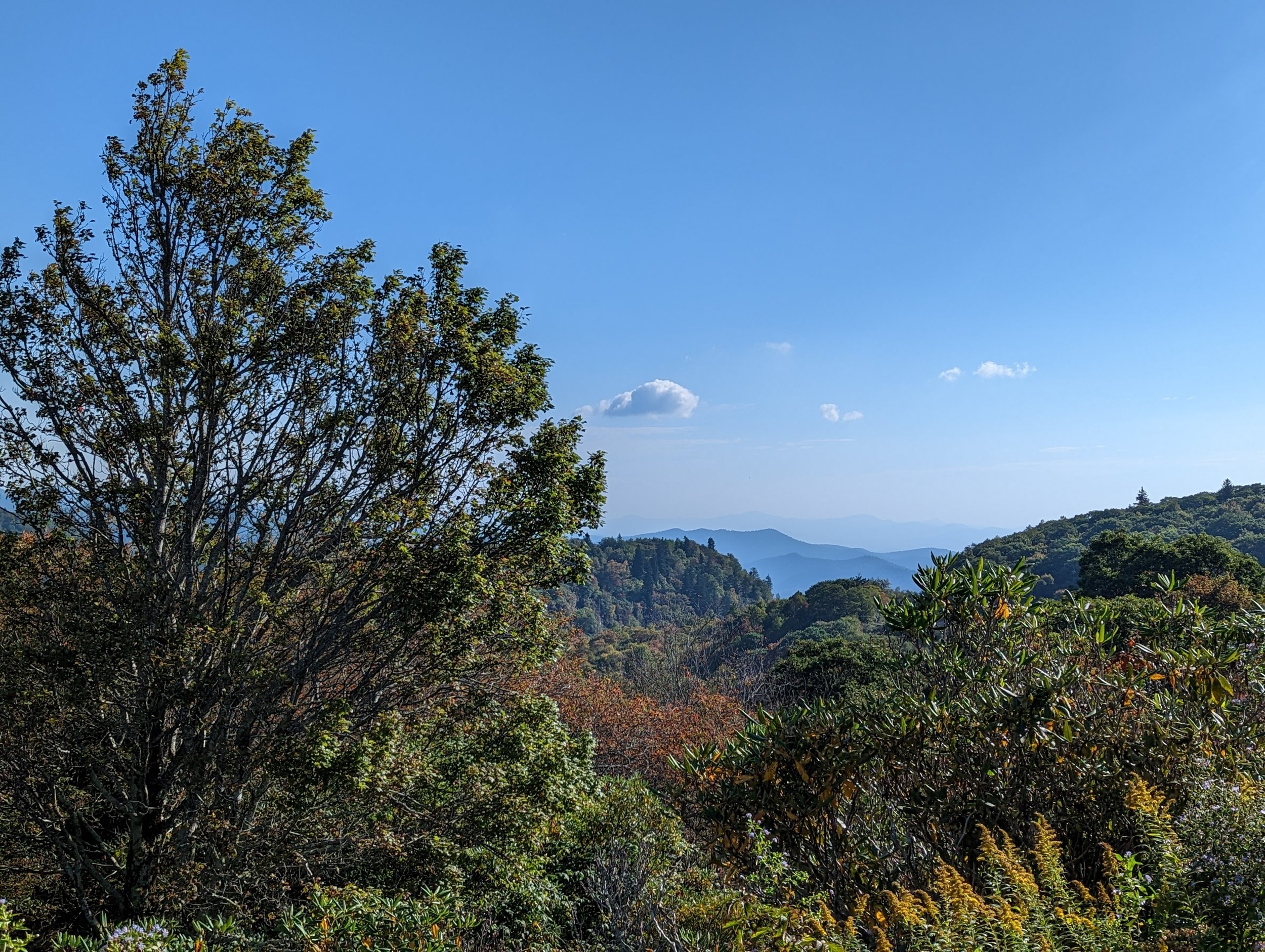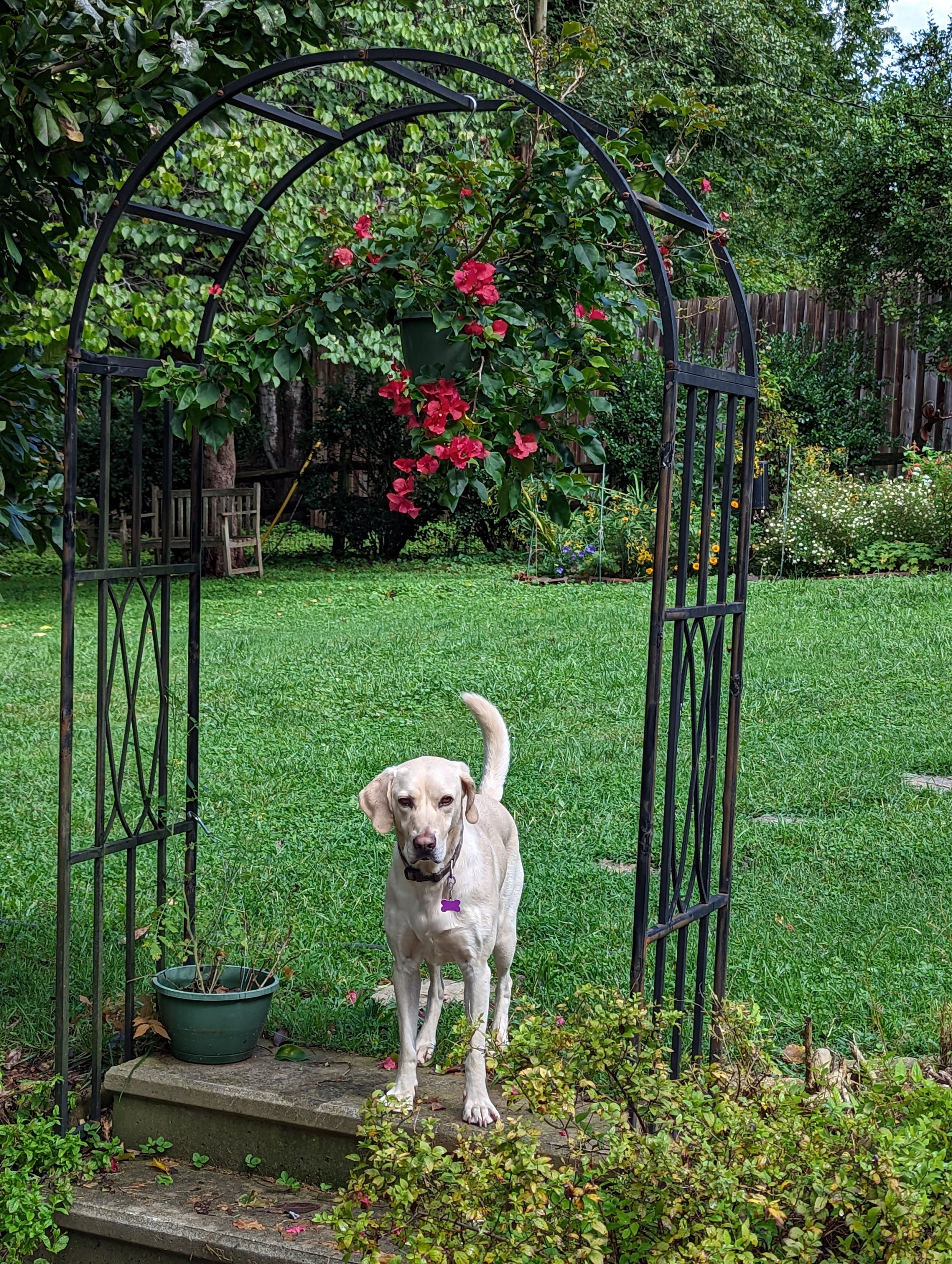Perennial mum Country Girl growing in our flower garden, pic from early October.
This is another oddly numbered set. #352 to #386 were used for saved tomatoes (their alternate numbers are T90-1 to T90-45. #399 is T90-46. #407 is T90-47. #431 and 432 are T90-48 and 49. This is the last time I used sequential numbers for saved seeds, so things will make more sense from here on in.
Of this set, there are but a few of interest. Let’s dig in!
_________________
Tomato #351 - Firesteel - this was actually sent to me by Don Branscomb in 1990, and it is already in my collection as tomato #122. It is a medium sized red tomato released by DeGiorgi in 1939, and I grew it in 1989.
Tomato #386 - H733 - sent to me by B. George in 1991, I never grew it and can’t find a bit of information on it.
Tomato #397 - Bilder - This was sent to me by Dick Deason in 1990 - I’d received it from Charlotte Mullens in 1990 but it was crossed. That was listing #246. I grew the seed from Dick in 1991, and it was a potato leaf plant giving good flavored large pink tomatoes.
Tomato #398 - Alyx Little Sun Yellow Cherry - I was sent this tomato by Charlotte Mullens of WV in 1990. I grew it in 1991, and got an indeterminate regular leaf plant with a high yield of good flavored small yellow cherry tomatoes. It is still listed in the Seed Savers Exchange.
Tomato #400 - Black - I purchased this tomato from Alfrey, the person who introduced the Peter Pepper, in 1990. I grew it in 1991 and was surprised to find a tomato very much like Cherokee Purple - regular leaf, indeterminate, large, purple and flavorful. Since Alfrey was from Knoxville TN, and Cherokee Purple from Rutledge, TN - could they indeed be one in the same?
Tomato #401 - Bull Sac - Also from Alfrey in 1991, I never did grow this one out. I assume that it is an Opalka type long pepper shaped paste tomato.
Tomato #402 - Angora - I purchased this variety in 1990 from Gleckler but never did grow it out. I don’t know it’s history and haven’t grown it out, but it is reported to be a smallish red tomato on a fuzzy, dusty miller type tomato plant.
Tomato #403 - Spanish Plum - I was given this seed by tomato enthusiast Jim Garvey of Pennsylvania - we met at the PA Hort Harvest Fair in PA in 1990. One of his goals was to grow huge tomatoes. I did grow this in 1991 - it was low yielding, indeterminate, and produced very large nearly heart shaped scarlet tomatoes. Jim claims the bees helped him with this one, crossing a large beefsteak with a heart.
Tomato #404 - Garvey’s Beefsteak - Jim also gave me this seed in 1990, and for a few years I really enjoyed growing it. First trying it in 1991, it produced large, oblate scarlet fruit with really good flavor. Sadly, it now seems to be obsolete - no one offers it.
Tomato #405 - Siberian - Obtained from Siberia Seeds in 1990, and never grown.
Tomato #406 - Glacier - Also from Siberia Seeds 1990 and not grown.
Tomato #408 - Peking - Another from Siberia Seeds, never grown.
Tomato #409 - Landry’s Russian - The last of a quartet from Siberia Seeds, not grown.
Tomato #410 - Thessaloniki - From Gleckler in 1990, never grown.
Tomato #411 - Egg - from Gleckler in 1990, never grown.
Tomato #412 - Louisiana Pink - From SSE member Austin Isaacs, Kentucky, in 1990, never grown.
Tomato #413 - Ukrainian Heart - I met a wonderful woman named Tania O’Neill at the PA Hort society Harvest Fair in 1990. She gave me a sample of her family heirloom. It is a wonderful tomato, a spindly, weepy foliaged indeterminate plant giving large, smooth meaty pink hearts with delicious flavor. I last grew it in 2003 and need to check to see if I can get the seeds to germinate, as it is time to grow it again. Several SSE members continue to offer it.
Tomato #414 - Large Yellow Amish - from SSE member MO VA O in 1990, and never grown.
Tomato #415 - Frank Williams - sent to me in a large collection of seeds from Edmund Brown of Missouri in 1990. I did grow this one in 1991 - it was a very large oblate pink on an indeterminate regular leaf plant that had an unpleasant characteristic to its flavor.
Tomato #416 - Summertime Improved - from Edmund Brown, not grown. It appears to be a commercial variety released by the Porter seed company. The only information in the SSE listing is that it is a determinate variety - I assume it is red fruited and medium sized.
Tomato #417 - Abraham Lincoln - from Edmund Brown, not grown. I’ve discussed this several times in my seed blog.
Tomato #418 - Giant Italian Red Heart - from Edmund Brown, not grown. There is one SSE listing - it is a large, red somewhat heart shaped tomato. There is no historical info associated in the listing.
Tomato #419 - Mortgage Lifter Yellow - from Edmund Brown, not grown. There is one listing in the SSE, and no additional information.
Tomato #420 - Childers - from Edmund Brown, not grown. It is an orange variety that originated with Mrs. W. G. Childers of Hamilton, WV in 1930 or so. She passed it on to a seed saver in 1980. It is a large, oblate orange late ripening beefsteak type.
Tomato #421 - Israel Yellow - from Edmund Brown, not grown. I can’t find any information on the variety.
Tomato #422 - Persimmon - from Edmund Brown, not grown. This was one of the first heirloom tomatoes I grew - see Tomato #25 in my blog series.
Tomato #423 - Vermillion - from Edmund Brown, grown out in 1991. It was a regular leaf, indeterminate medium to large oblate pink with flavor that was OK at best. There is a single listing in the SSE yearbook.
Tomato #424 - Tiffen Mennonite - from Edmund Brown, not grown. Introduced into the SSE catalog by Thane Earle in 1985, it was brought to the US from Germany by Mennonites of Wisconsin. It is yet another large fruited potato leaf pink beefsteak type.
Tomato #425 - Genuine Italian Potato Leaf - from Edmund Brown, not grown. This is a large fruited potato leaf pink beefsteak type. According to the Sandhill website, it was purchased in a Canton, OH hardware store by Gary Staley of Florida - it was released by Letherman, but I haven’t determined the date yet.
___________
I only grew out 9 of the above varieties, the best of which being Ukrainiah Heart, Garvey’s Beefsteak, Spanish Plum, Black, and Bilder.
New England Aster growing all along the Ivestor Gap trail in the Black Balsam area off of the Blue Ridge parkway







































